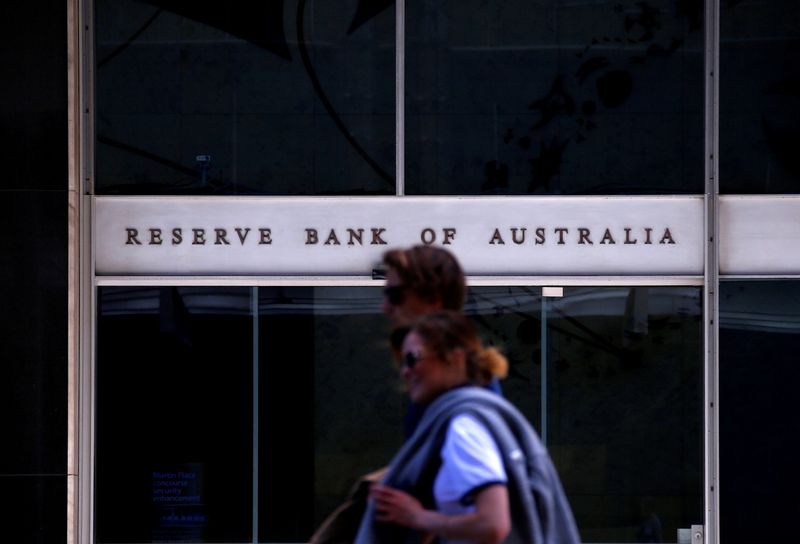A look at the day ahead in European and global markets from Tom Westbrook
Australia's central bank gave investors another reason to stabilise the sliding U.S. dollar on Tuesday: keeping rates on hold, as expected, and sticking to its "data dependent" outlook.
Markets have interpreted the Reserve Bank of Australia's stance as dovish and, although the decision contained few surprises, they sold the fact in the Asia session and drove the Aussie briefly back below its 200-day moving average.
The broader U.S. dollar index is trading just above its 200-day moving average as it finds support from some ripples of doubt whether the priced-in "soft landing" for the U.S. economy is really achievable.
The relative U.S. interest rate outlook right now fits the weaker dollar narrative - futures markets are pricing in bigger rate cuts by the Fed next year than by any other major or emerging market central bank.
But will the Fed cut rates by 125 basis points next year? Doubts about that prospect have for now put the brakes on dollar selling. Even if the Fed does go that far, other central banks are sure to lower their policy rates by more than markets are currently predicting.
Gold, which shot to a record high in Asia's notoriously thin morning hours on Monday, has recoiled sharply.
The focus now turns to U.S. job openings figures due later on Tuesday and the non-farm payrolls figures out on Friday. Resilience on either front might spook the dollar bears.
Also ahead in Europe today are final PMI readings and producer prices. Elsewhere in Asia, China's markets slipped deeper into what is shaping up to be a third consecutive year of sharp underperformance compared with global stocks overall.
Hong Kong's Hang Seng is down almost 17% in a year when MSCI's gauge of global equities is up roughly 15%, and investors are showing little sign of being lured back in by the low valuations.
Tokyo inflation, a reliable proxy for national data, slowed enough in November to perhaps give the Bank of Japan some leeway for a leisurely journey out of its ultra-easy policy. The yen was steady at 147 to the dollar.

Key developments that could influence markets on Tuesday:
Economics: Eurozone and British final PMIs, Eurozone producer prices, U.S. ISM services survey and job openings